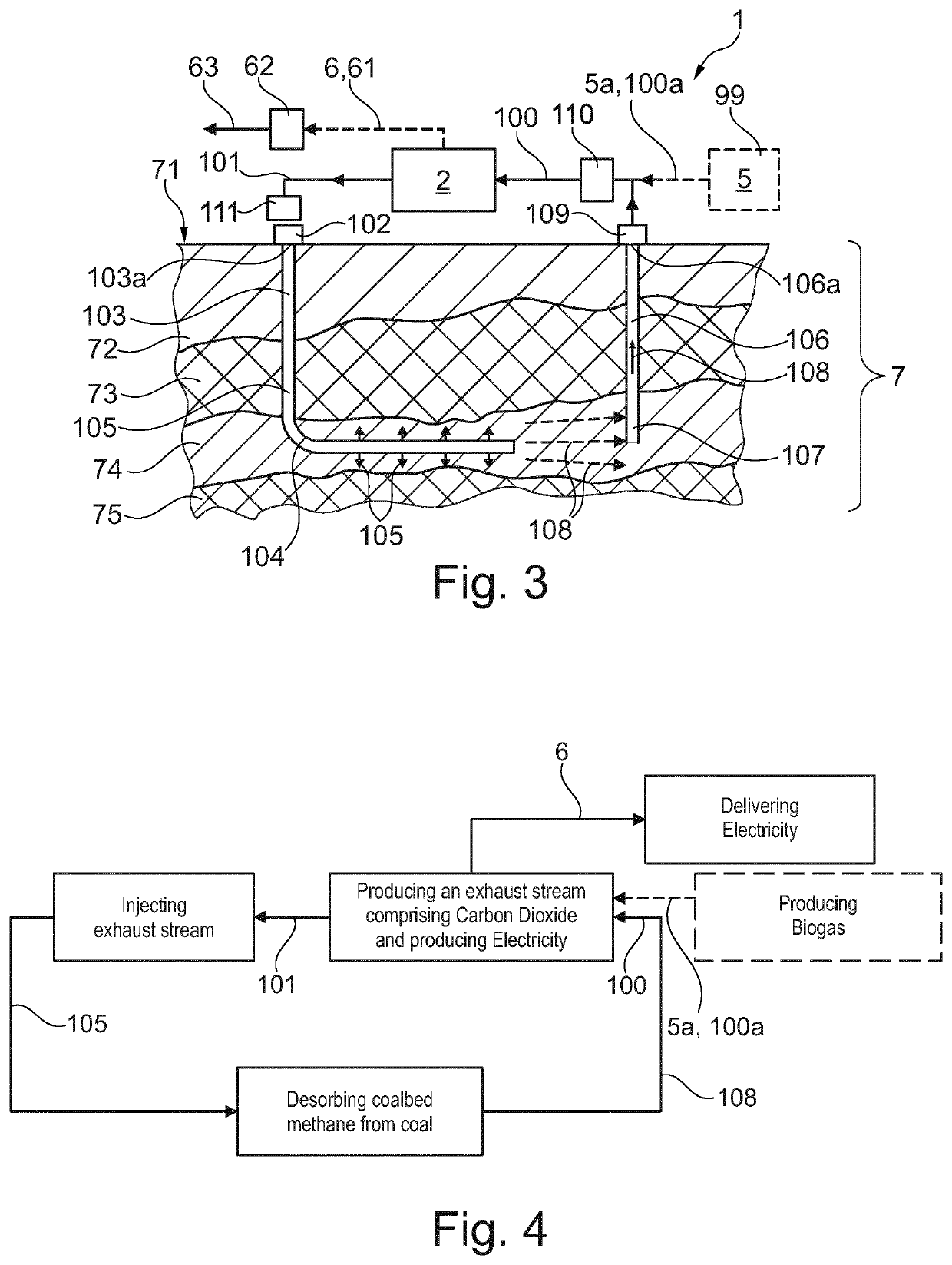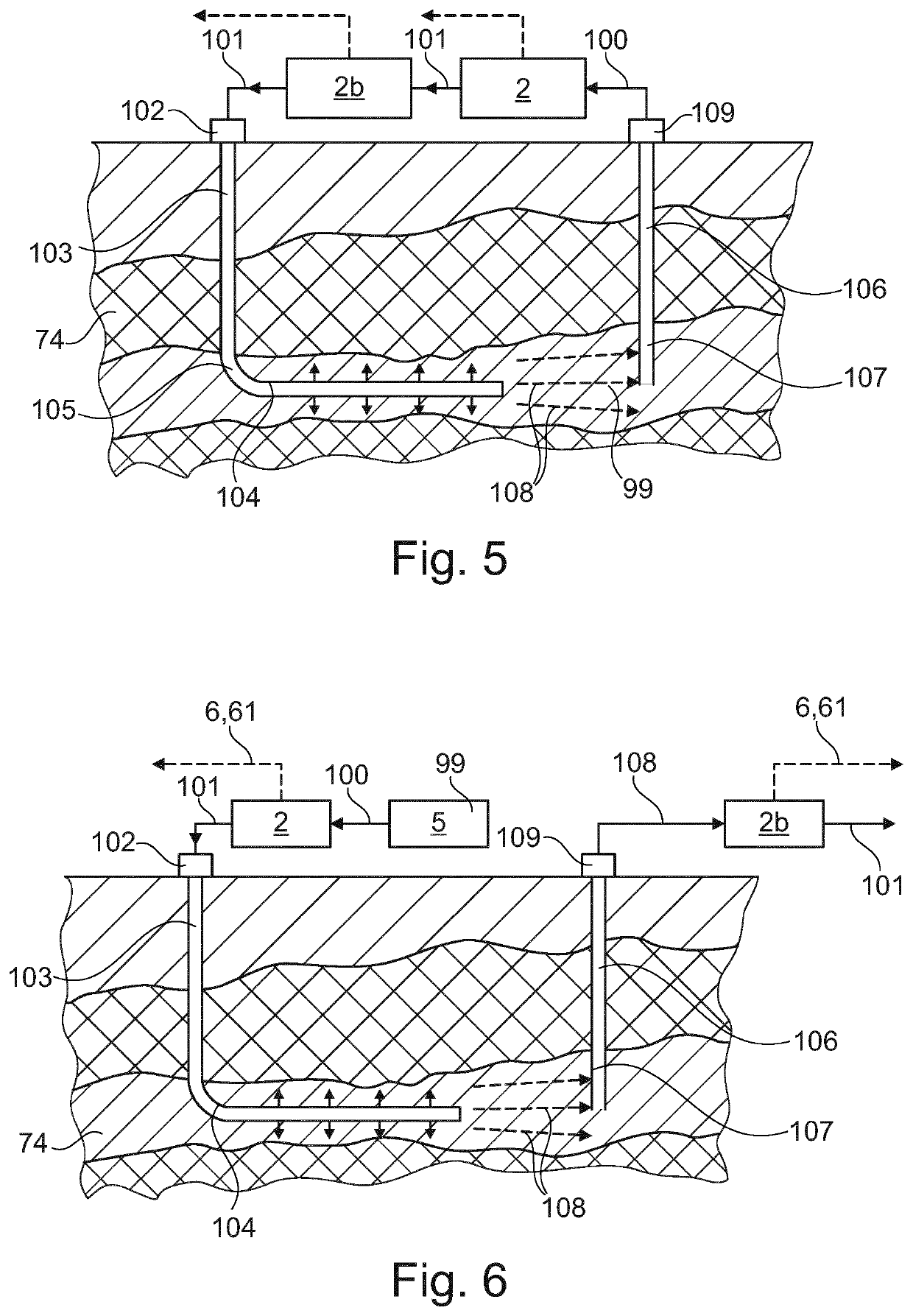Method and system for removing carbon dioxide
a carbon dioxide and carbon dioxide technology, applied in the direction of sustainable manufacturing/processing, separation processes, well accessories, etc., can solve the problems of small fraction of cbm economically recoverable, and the limitation of depressurization to coal beds with higher permeability
- Summary
- Abstract
- Description
- Claims
- Application Information
AI Technical Summary
Benefits of technology
Problems solved by technology
Method used
Image
Examples
first embodiment
[0063]FIG. 1 shows a system 1 and method for removing CO2 and for producing coal bed methane (CBM). The system 1 comprises an SOFC system 2 comprising a solid oxide fuel cell 2a. Exemplary embodiments of suitable SOFC systems 2 are disclosed in FIGS. 8 and 9 in detail. A biogas reactor 5 produces a biogas 5a from for example biological waste, plant biomass collected from the earth's surface or phytoplankton biomass collected from the ocean. The biogas 5a is preferably purified in a pre-treatment unit 110 and leaves the pre-treatment unit as a gaseous hydrocarbon feed 100. The gaseous hydrocarbon feed 100 is fed to the anode side of the solid oxide fuel cell 2a. The gaseous hydrocarbon feed 100 is at least partially oxidized in the solid oxide fuel cell 2a, and leaves the solid oxide fuel cell 2a as an anode exhaust stream 101, the solid oxide fuel cell 2a thereby producing electricity 6, 61. The anode exhaust stream 101 serves as an injection gas 105 which through a wellhead 102 and...
second embodiment
[0070]FIG. 3 shows a system 1 and method for removing CO2 and for producing CBM. In contrast to the embodiment disclosed in FIG. 1, in the system and method disclosed in FIG. 3, at least part of the production gas 108 is fed back to the SOFC system 2 and used as the gaseous hydrocarbon feed 100, which is fed to the solid oxide fuel cell 2a. The production gas 108 may directly be fed to the solid oxide fuel cell 2a. In an advantageous embodiment the production gas 108 is purified in a pre-treatment unit 110 before feeding the pretreated production gas 108 as the gaseous hydrocarbon feed 100 into the anode side of the solid oxide fuel cell 2a. The solid oxide fuel cell 2a thereby producing electricity 6 and the anode exhaust stream 101. A compressor 111 may be used to compress the anode exhaust stream 101 before feeding it into the first well head 102. The method for feeding the anode exhaust stream 101 into the first well head 102 and for collecting the production gas 108 at the seco...
PUM
| Property | Measurement | Unit |
|---|---|---|
| GWP | aaaaa | aaaaa |
| electrical energy | aaaaa | aaaaa |
| adsorption | aaaaa | aaaaa |
Abstract
Description
Claims
Application Information
 Login to View More
Login to View More - R&D
- Intellectual Property
- Life Sciences
- Materials
- Tech Scout
- Unparalleled Data Quality
- Higher Quality Content
- 60% Fewer Hallucinations
Browse by: Latest US Patents, China's latest patents, Technical Efficacy Thesaurus, Application Domain, Technology Topic, Popular Technical Reports.
© 2025 PatSnap. All rights reserved.Legal|Privacy policy|Modern Slavery Act Transparency Statement|Sitemap|About US| Contact US: help@patsnap.com



